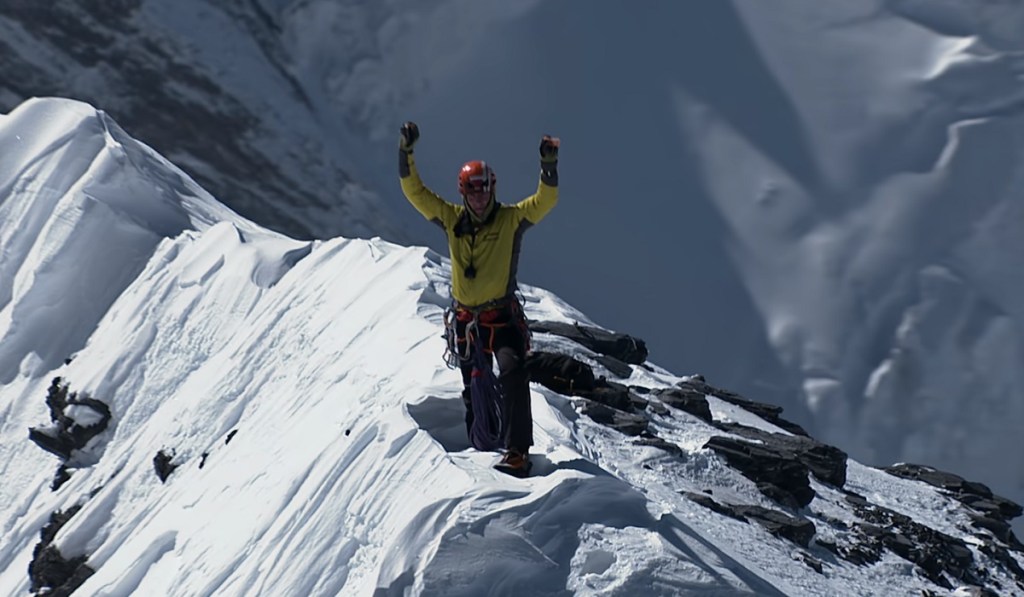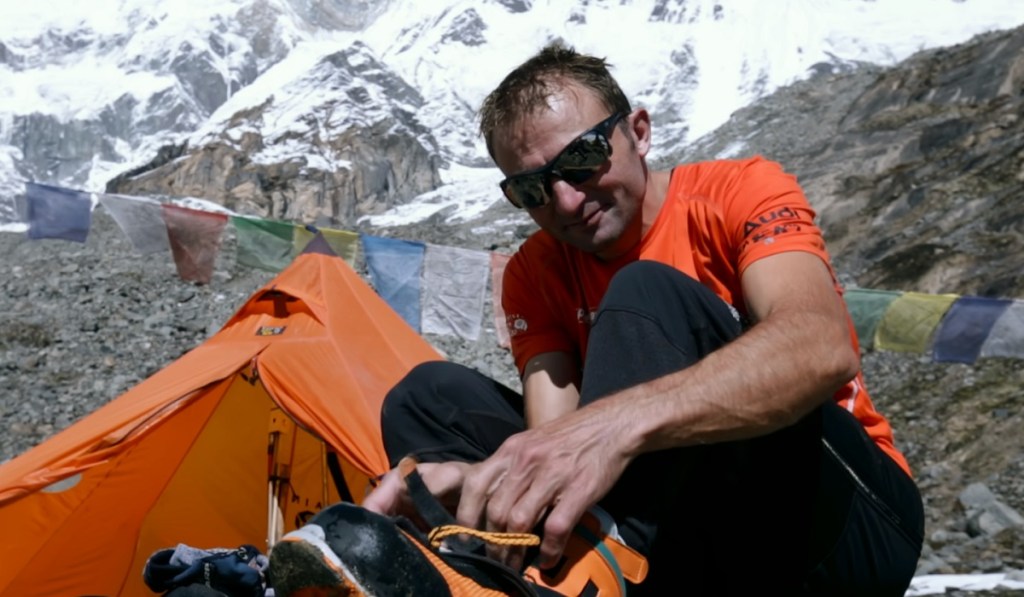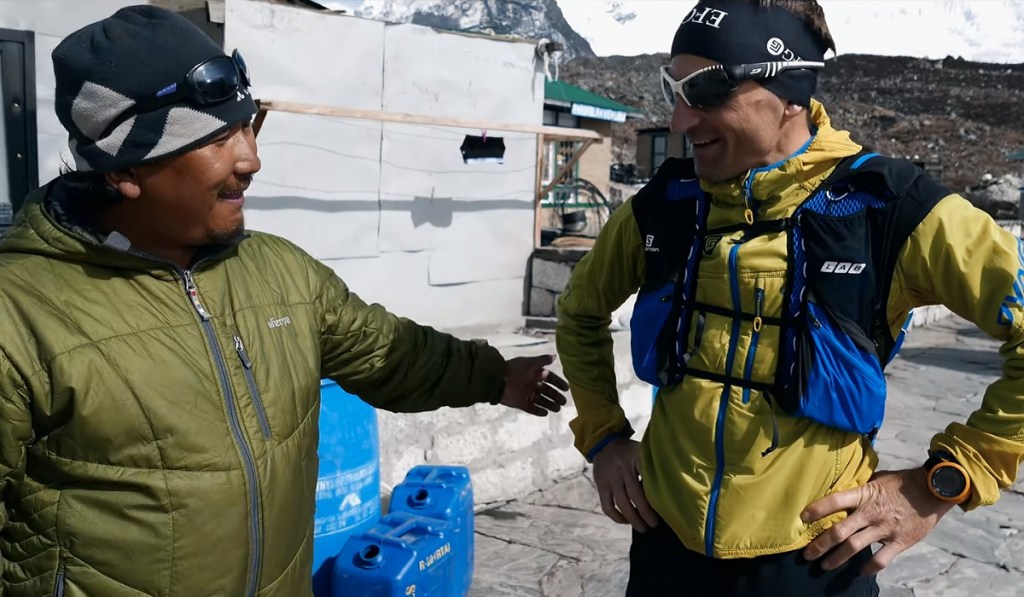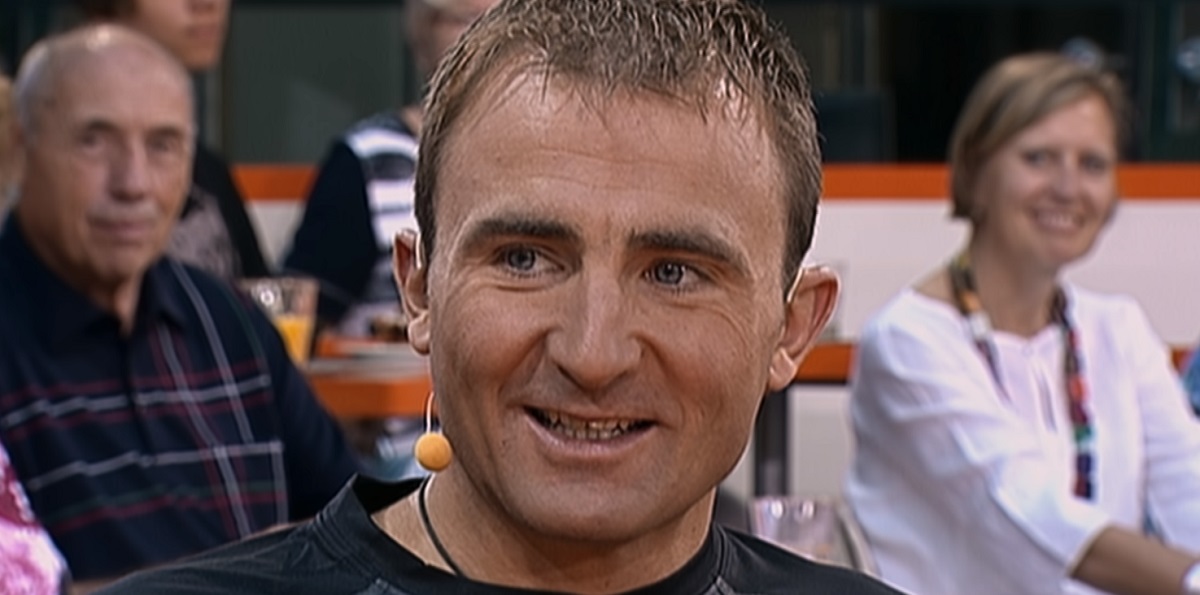Directed by Nicholas de Taranto and Götz Werner, Netflix’s ‘Race to the Summit,’ AKA ‘Duell am Abgrund,’ tells the story of two amazing mountaineers, Ueli Steck and Dani Arnold. The former especially became highly popular for his feats and was beloved by people across the world for taking the sport to the very extreme and opening up a whole new door when it came to mountain climbing. Hence, his tragic demise left the public reeling, with many wondering just how it all happened. Well, here is what we know about him!
Who Was Ueli Steck?
Born on October 4, 1976, in Langnau, Emmental, Switzerland, Ueli Steck was the third son of Max and Lisabeth, the former working as a coppersmith. Growing up in a town famed for Ice Hockey, Ueli’s older brothers both played the sport, and one of them even pursued his passion as a profession. While Ueli would join his brothers for the game and even went on ski trips with his father, it was mountain climbing that he truly found himself attracted to after being introduced to the same by Fritz Morgenthaler, a family friend who taught him the discipline on the limestone mountain called Schrattenfluh.

By the age of 16, Ueli had started to climb some of the hardest ascents in the Alps and had started to make a name for himself. By the next year, he had earned the International Climbing and Mountaineering Federation’s 9th difficulty rating. This was followed by an 18-year-old Ueli climbing the north face of the Eiger and the Bonatti Pillar. This only marked the start of his highly successful career. As years went by, he started to work as a carpenter, but his fame meant that he often had other obligations to fulfill.
For Ueli, mountaineering was a discipline of speed which he tried to maximize as much as possible. Along with Stephan Siegrist in 2004, he reached the peaks of Eiger, Mönch, and Jungfrau within 25 hours, a feat that earned the duo much praise. The following year saw him solo climb the north wall of Cholatsend and the east wall of Taboche as a part of the Khumbu-Express Expedition. The novelty of his accomplishments helped him become one of the three best European alpinists, according to Climb.
As the internet and media rose in fame, Ueli started to capitalize on the possible avenue to maintain his sponsorship and show the world exactly what he was capable of. In 2007, the mountaineer climbed the north face of Eiger in only 3 hours and 54 minutes, which was a record on its own. However, Ueli ended up improving on his own record the following year by traversing the same climb in just over 2 hours and 47 minutes.

In 2008, Ueli became the first person to be given the Eiger Award, though the climber himself seems to have set his eyes on the looming peaks of the Himalayas. He ended up submitting Mount Everest in 2012 without oxygen cylinders. However, in 2013, the Swiss man and his companions, Simone Moro and Jon Griffith, allegedly found themselves arguing with the local community of sherpas at Everest Camp 3, who claimed that one of their community members had been killed because of a piece of ice that was dislodged by the trio while climbing up Lhotse in preparation for their upcoming expedition, something that the climbers denied. They were apparently attacked by a larger group of sherpas at Everest Camp 2 but were saved by other foreign climbers present at the site.
As for Ueli’s ascent of Annapurna, the mountaineer had attempted the feat in 2007 and 2008, both times with disheartening results, given the danger that the mountain poses. However, in October 2013, he seemingly achieved his target by starting his climb up the south face of the mountain on October 8 and completing it on October 9. The time that it took the mountaineer to start from the base camp and come back to it was 28 hours, a feat many could not help but praise.
For his Annapurna ascent, Ueli received his second Piolet d’Or in 2014, his first having been awarded to him in 2009 for climbing the north face of Tengkampoche. Some of the mountaineer’s more notable achievements include submitting all of the 82 peaks of the Alps that are over 4000 meters in 62 days, without using any motorized vehicles, though that certainly did not stop him from making the best use of paragliding. This feat was achieved in 2015, the same year in which he broke Dani Arnold’s record by climbing the north face of Eiger in 2 hours and 22 minutes.
Ueli Steck Died During an Everest Training Accident
In April 2017, Ueli Steck was preparing to hopefully achieve a feat that had only been seen once before. The mountaineer’s goal was to attempt the Hornbein route in order to first climb up Mount Everest and then take perhaps the world’s tallest path to the peak of Lhotse without climbing down. During the preparation phase, Ueli’s companion, Tenji Sherpa, became afflicted with frostbite, which led to some delay in the expedition.

However, Ueli decided to continue scouting the area and climbed up Everest Camp 2. However, according to a text he sent Tenji, the mountaineer decided to change his plans and told the sherpa on April 29, 2017, that he planned on climbing Nuptse the next day in order to prepare himself for the upcoming expedition. On April 30, 2017, Ueli and Yannick Graziani started to climb towards Everest Camp 3 from Everest Camp 2, the latter attempting to summit Mount Everest while Ueli branched off towards the right in order to reach the peak of Nuptse.
Some sherpas and expedition members did see him while Ueli was making the trek, though he was alone in his final moments, making the exact circumstances of his death a mystery. It is believed that the Swiss man had reached about 300 meters below the peak of Nuptse before he fell for about 1,000 meters (3,280 feet), though the reason behind the same remains unknown. His body was discovered in the Western Cwm and was then transported to Kathmandu.
Read More: Dani Arnold: Where is the Mountaineer Now?


You must be logged in to post a comment.